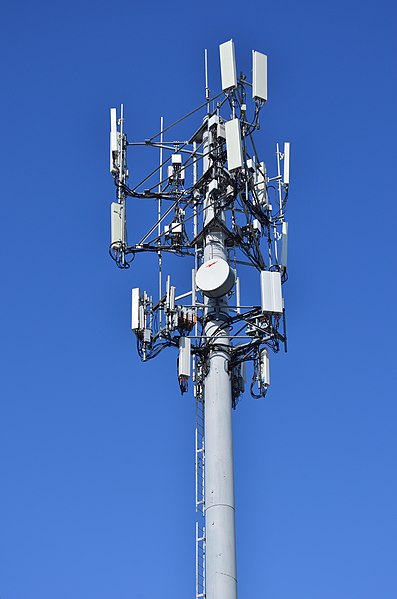Radio Towers
Found everywhere from dense urban biomes to remote mountaintops, Radio towers fill an important role in their ecosystems by facilitating advanced communications not just between other towers but also between many diverse forms of life, from the smallest computid to the largest megavessel. They accomplish this impressive feat by using their antennae to transmit and recieve information through waveforms and electrical pulses. The more antennae an individual Radio tower has, the more advanced its cognitive and communicative capabilities.Radio towers are typically grouped into guyed towers, which are supported by wires, and standing towers, which support themselves. Standing towers can be further subdivided into lattice towers, with a triangular or extended box shape, and monopole towers, whose bodies are comprised of a single solid structure. These monopoles are more common in highly populated areas, and are often much shorter in stature; the average monopole stands a mere 100' tall, while lattice species can grow as high as 2000' or more!
Anatomy
Radio towers tend to be somewhat territorial, and prefer to remain relatively distant from one another while maintaining clear lines of sight. Research suggests this allows individual towers to maximise their population density without excessive overlap between territories. While their structures may seem fairly uniform at first glance, each individual is highly specialized to its ecological niche, and may have a completely different set and arrangment of organs than its neighbor - indeed, many radio towers are thought to be completely unique! Here the most common organs and internal structures are listed here for reference:
Antennae
- Structural: some radio towers use their own skeletons as massive antennae! Watch out: physical contact with this type of tower will be fatal.
- Cellular: thin vertical bars affixed to the tower are used for cellular communication.
- Microwave: parabolic dishes which range from small, solid units to larger grid-style appendages or even massive, shielded drums.
Vascular Organs
- Wires: in lattice towers, wires run along the exterior, while monopole species hold their wires internally.
- Lightning Arrester: this static brush safely transfers energy from lightning strikes to the ground without damaging the radio tower.
Structural
- Base Station: while every radio tower will posess some type of base structure, these organs range in size from small, sturdy boxes to much larger, spacious apparatuses. They typically contain other organs related to power and information handling.
- Generators and Batteries: all radio towers require at least a small amount of electrical power to survive, and will grow these organs to allow them to breathe if temporarily disconnected from transmision networks.
Communication
- TMA: a tower mounted amplifier is a small box sometimes found midway up the body of the tower. It is believed to improve the tower's connection to local microbes, such as cellphones, saving power and psychic energy (sometimes called "data").
- RRH: radio relay heads may be found halfway up some towers, distributing some of the base station's functions in tight spaces that require more vertical body plans.
- Baseband Microwave Processor: this allows more advanced thought patterns in radio towers equipped with microwave antennae.
